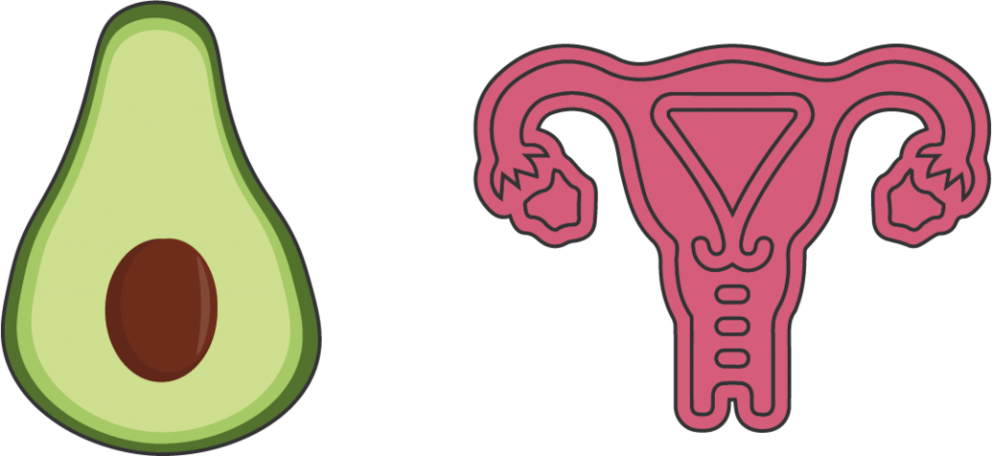Certain foods are known to affect the health of some organs. The consumption of carrots, for example, is said to be good for the eyes. But have you ever noticed that a slice of carrot looks like an eye? Is the form or structure of the food actually related to the organic effect?
The structure and color of some foods give an indication of their effects on organs they resemble. They should support their functionality or be able to reduce the risk of certain diseases. The assumption originally comes from the so-called doctrine of signatures.1 She assumes that parts of plants resemble human body parts and can be useful for them.
Tomatoes support heart health
Have you ever noticed that the sectional image of a tomato depicts the inner structure of the heart? Just like the organ, the vegetable is divided into several chambers. Lycopene, which is one of the antioxidants, ensures the healthy effect. It inhibits deposits of harmful substances in the veins and is said to reduce the risk of heart disease and prevent various types of cancer.2
The ear resembles a mushroom

Also on the list of foods that resemble organs is the fungus. Its cross section reflects the inner ear. Mushrooms contain a lot Vitamin D. FITBOOK regularly reports on its effects on health. Among other things, vitamin D is important for Bone.3 The fine bone structures in the ear can also be influenced, so that the sound can be transmitted to the brain without interference. As a result, the fungus can also improve hearing.
Also interesting: The health benefits of mushrooms for athletes
walnut for the brain

the walnut Like the brain, it is divided into two hemispheres. Wrinkles and indentations also indicate the shape of the organ. Don’t become without a reason nuts often referred to as energy suppliers. The well-known “trail mix”, for example, has long been an aid to promoting performance. Walnuts have a particularly high content of Omega-3 fatty acids, which can support the performance of the brain enormously. Their antioxidant and anti-inflammatory properties are said to prevent or slow down mental decline.4
Also interesting: 5 foods that are bad for the brain
Carrots and almonds for sharp vision

If you cut the carrot into a slice, it can resemble the human eye. You can see both the middle pupil and the iris that encloses it. Carrots are known to be rich in vitamins and antioxidantslike the plant matter beta-carotene. It can support the health of the macula and thus protect it from degeneration (AMD) – a age-related visual impairmentwhich can lead to blindness.
Comparable to the almonds, because they also ensure healthy eyes. One often speaks of an almond-shaped eye – this example also points to the connection between shape and health effects. The included vitamin E is the key nutrient. Incidentally, this can also help to reduce dark circles or sunken eyes.1
Also interesting: 7 foods that are good for your eyesight
Celery for healthy bones

Celery is also one of the foods that resemble organs. It depicts the shape of a human bone. Just like the bones, the vegetables consist of 23 percent sodium and can thus counteract a deficiency. Part of the molecular structure of bone is also made up of silicon. It is also abundant in celery and gives bone its strength. A study also showed that apigenin from celery, when consumed daily, can speed up the healing of bone defects.5
Grapes for free breathing

The lungs are made up of many branches. These end in the alveoli, which are responsible for gas exchange. Grapes can resemble lungs as a whole bunch, or stand for an alveoli as a single bunch. Because of their nutrients, grapes are said to be resveratrolemphysema (increased presence of air and gas in tissues) and in particular the nuclei counteract the risk of lung cancer can alleviate. However, this has not yet been scientifically proven. The grape seed extract OPC (oligomeric proanthocyanidins) is also said to have symptoms of allergic asthma can reduce.6
Also interesting: Expert shares tips on how to protect and strengthen the lungs
Ginger shapes the stomach

Ginger resembles the structure of the digestive organ – the stomach. The spiciness of the root comes from the plant substance gingerol. It ensures a calm stomach and can thus prevent nausea and vomiting. In addition, the root can also promote digestion and counteract pain.7
Also interesting: Possible reactions from excessive consumption of ginger
Avocados for a healthy uterus

One avocado may resemble the shape of a uterus. The one contained in the fruit folic acid ensures the health of the reproductive organ and its ability to function. Because folic acid is also known to be an important component that is used for a healthy pregnancy. In particular, the risk for cervical cancer should be able to be reduced by the folic acid-rich diet.8th
Also interesting: Can you also eat the avocado stone?
Grapefruit for breast health

The resemblance to the female breast is no coincidence in this example either. The grapefruit – also called Adam’s apple – contains a lot vitamin C and some bitter substanceswhich are said to have anti-cancer effects. So-called limonoids are contained in the citrus fruit and can breast cancer counteract preventively.1 The entire lymphatic system is also supported and a healthy lymphatic drainage is the result.
There are many other foods that are healthy for certain organs to eat and that look similar to them. In addition, they can be helpful for many other functions of the body and promote general health.
Sources
- 1. Bhavani Ramesh T, Prem Kumar P, Sai Krishna G (2014). Fruits and Vegetables that Resembles to body Organs and have Significant Role on them. (accessed on September 21, 2022)
- 2. Cheng HM, Koutsidis G, Lodge JK et al. (2019). Lycopene and tomato and risk of cardiovascular diseases: A systematic review and meta-analysis of epidemiological evidence. Crit Rev Food Sci Nutr.
- 3. LeBoff, MS, Chou, SH, Ratliff, KA et al. (2022): Supplemental Vitamin D and Incident Fractures in Midlife and Older AdultsNew England Journal of Medicine.
- 4. Chauhan, A., Chauhan, V. (2020). Beneficial Effects of Walnuts on Cognition and Brain Health. nutrients.
- 5. Lei Jiang, Zenggen Liu, Yulei Cui, Yun Shao, Yanduo Tao, Lijuan Mei (2019). Apigenin from daily vegetable celery can accelerate bone defects healing. Journal of Functional Foods.
- 6. Lee T, Kwon HS, Bang BR et al. (2012). Grape seed proanthocyanidin extract attenuates allergic inflammation in murine models of asthma. J Clin Immunol.
- 7. Can Ginger Actually Help Your Upset Stomach? (accessed on September 22, 2022)
- 8th. Lin, H.-Y., Fu, Q., Kao, Y.-H. et al. (2021). Antioxidants Associated With Oncogenic Human Papillomavirus Infection in Women. The Journal of Infectious Diseases.
- Dr Thind’s Homeopathy Treatment. 17 Foods That Resemble Your Body Parts And Their Benefits. (accessed on: 09/21/2022)

